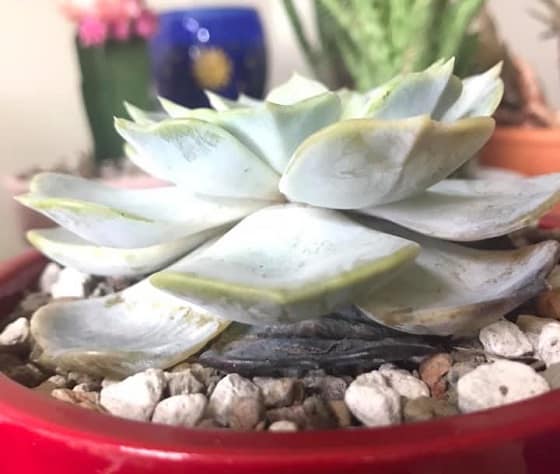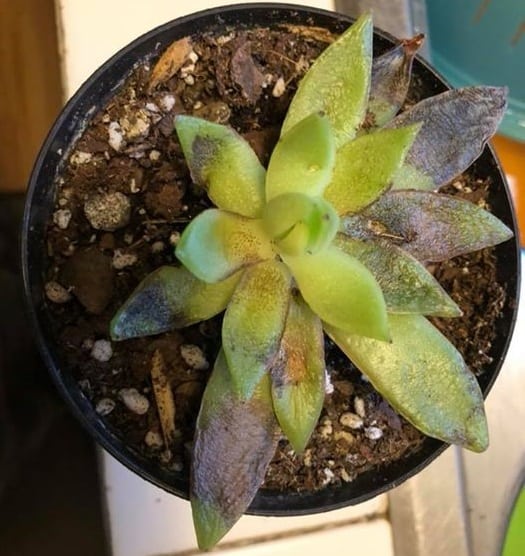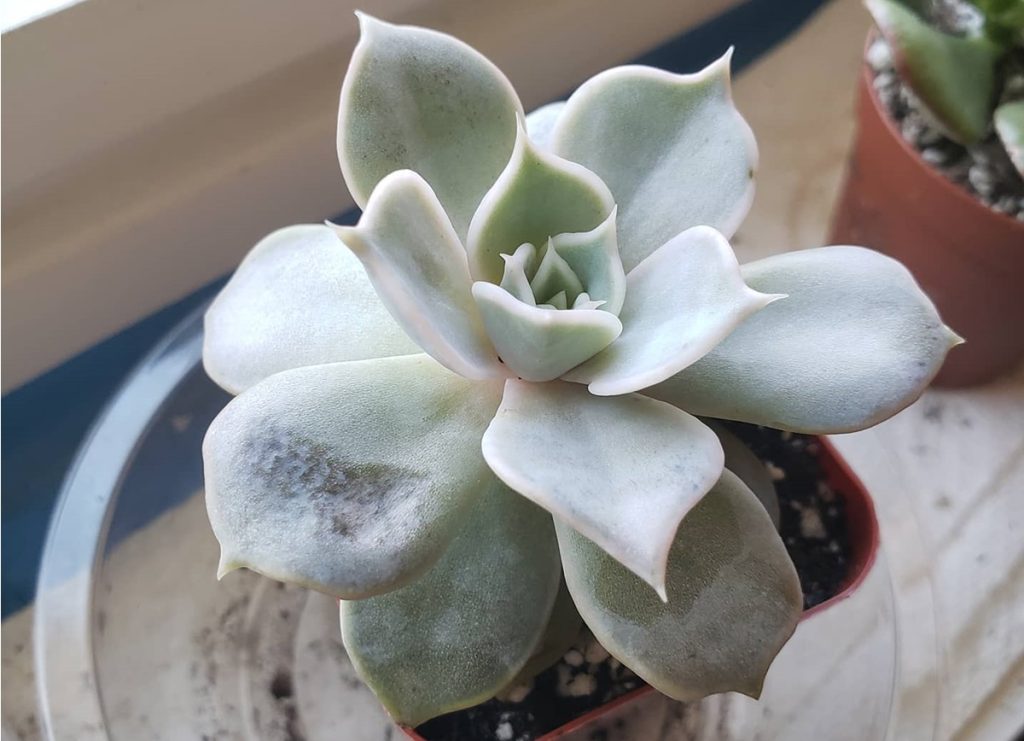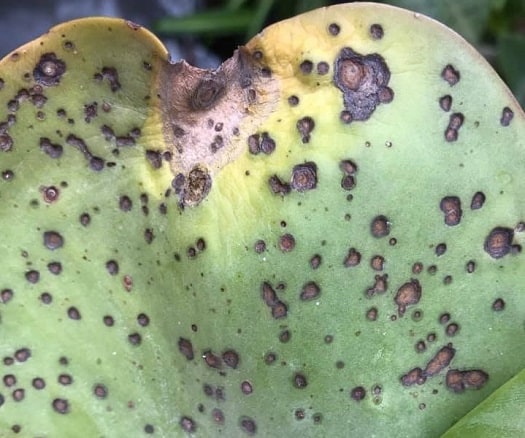Blackened Succulent Leaves: Causes and Solutions
If you have succulent leaves turning black, then there is a problem. But don’t panic! There are four possible mistakes that may have been made. This blog post will help you take care of your succulents the right way and prevent these problems from happening again in the future.

Contents
Why do Succulent Leaves Turn Black?
Succulent plants sometimes develop black leaves due to four main reasons: sunburn, over-watering, and problems with bugs, viruses, or fungi.
If you have been growing succulents for a while, you may have encountered this issue. It’s quite common to see black spots on the leaves or stems. When you observe your succulent leaves turning black, it’s important to take action because something is not right with your plant.
Now, let’s figure out what causes the black leaves on your succulents.
1. Overwatering
Symptom: Soft or mushy leaves

When you notice your succulent turning black, it usually means it is rotting from the roots upwards. This occurs when the plant has been given too much water and has been sitting in it for too long.
Succulent plants store extra water in their leaves, roots, and stems to withstand the dry conditions of their desert habitats. However, too much water causes the leaf tissues to exceed their water storage capacity, leading to swelling and bursting.
The black spots you see are a type of succulent fungus that develops in the damaged tissues of the plant.
Solution: You may not be able to save your succulent, but it’s worth a try.
- Carefully remove the plant from its pot and check the roots to see if they are still healthy. If they are, remove all the infected leaves and stems, and replant the succulent in dry soil.
- Allow it to settle in the new soil with good drainage, without watering it for a few days. After two or three days, gradually start watering it, but less often than before.
- If the roots are soft, it means they are dead, and unfortunately, the plant cannot be saved.
- For the remaining healthy parts of the plant, you can take some cuttings.
- Let the cut ends dry and heal before transplanting those cuttings into new containers.
- You must get rid of both the dead mother plant and the soil it was planted in because both could be contaminated with the fungi that caused the rot.
Read also:
How Often To Water Succulents: The 3 Things that Affect Your Watering Schedule
2. Sunburn
Symptom: Dry black spots on the leaves

While succulent plants enjoy sunlight, excessive exposure to intense sunlight can harm or negatively affect them. This can happen especially when a succulent plant, originally grown in partial shade, is suddenly exposed to too much direct sunlight without time to adjust.
For instance, if you purchase a plant that was grown in a shaded area from a nursery and then place it on your sunny terrace or move an indoor succulent plant outside, it can lead to leaf burn.
Solution: Restoring a sunburnt succulent is relatively easy.
Start by removing the sunburned leaves since they won’t grow back, and relocate the plant to a shaded area.
Allow the succulent a few days to adapt to direct sunlight. On the first day, expose it to the sun for three or four hours in the morning, gradually increasing the duration by one hour every day.
Bring the plant indoors at night or keep it in a shaded spot.
By the fourth or fifth day, the succulent will have adjusted, and you can safely let it bask in the sun without worrying about leaf sunburn.
3. Bugs
Symptom: Small black spots resembling freckles
Mealybugs, mites, and aphids are pesky insects that feed on succulent leaves, causing tiny areas of dead tissue that eventually lead to the development of black mold.
Solution: Remove and discard any infected leaves.
Take alcohol-soaked cotton balls and gently wipe the leaves, or use a potassium soap or insecticide to eliminate the bugs.
Continue treating the affected plant daily until the small bugs are eliminated.
4. Viral Infection
Symptom: Black spots underneath the leaves

If you notice black spots on succulents, specifically underneath the leaves, it could be a result of a viral infection called the black ring virus.
The same virus that causes tomato wilt, known as Orthotospovirus, can also affect succulents.
Solution: Unfortunately, there is no cure for this viral infection.
To prevent the spread of the disease to other plants, carefully remove the infected leaves and sterilize the scissors with alcohol afterward.
Final Words
We hope this article has helped you understand why some of the leaves of your succulents have turned black. If you want to learn how else you can help keep your plant healthy, come back for our next blog post that will outline essential care tips for your succulents!
